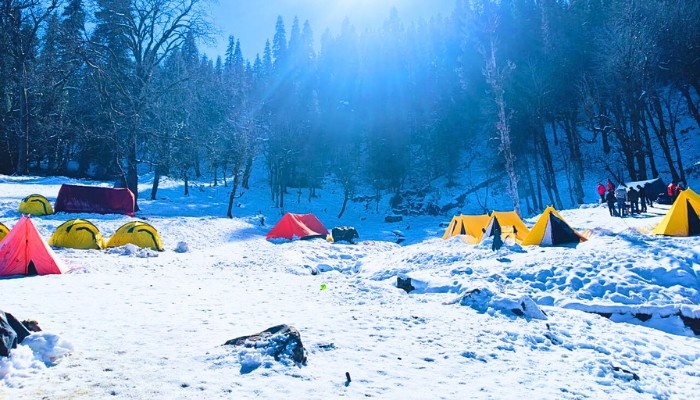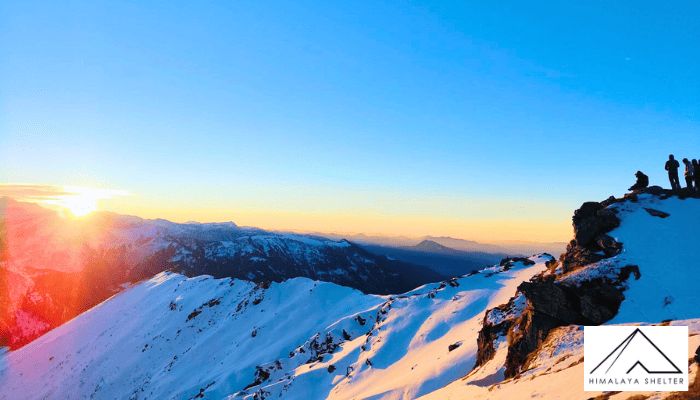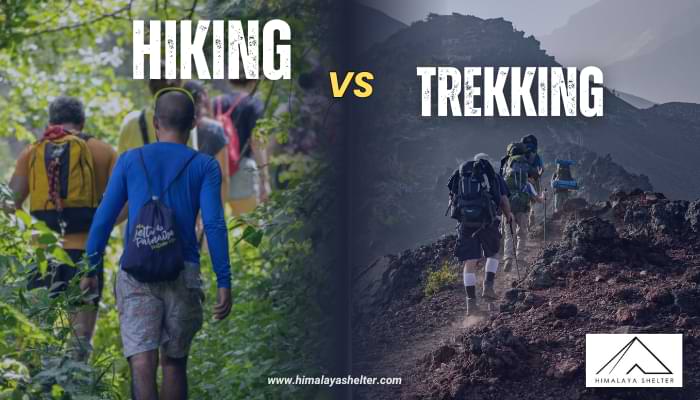
Hiking vs Trekking Differences : Dive in to know Everything before you Choose Your Trail
What is Hiking?
Hiking is an outdoor strenuous walk on designated or well-marked paths in the outskirts of city or in the countryside. Apart from physical exercise and relaxation, hiking is a way to connect with nature. A hike is usually for a few hours or a day. It usually doesn’t involve much planning. Also, for a hike one doesn't require massive gears. You need excellent hiking shoes. For a little longer hike, you need a small backpack, as you would need water, little snack, and sunscreen. The benefits of a hike are noteworthy. Hiking improves blood circulations. Thus, it reduces stress, and increases resilience.
Key Features of Hiking
The key features of Hike involve its hassle-free planning. One usually covers a distance from 2 to 25 Km during a hike. These well-discovered trails of a hike range from easy walks to steady climbs. With a motive to connect with nature, ease stress, hikes usually need basic planning.
Benefits of Hiking
Hiking offers good physical and mental activity. It helps build strength, both physical and mental. A hike helps in weight loss. Hiking helps the heart. It improves the blood flow, enhances the mood, and reduces stress. Hike in the city parks, quiet hills, or open fields any path of your choice. You can walk alone and find peace. Or you can walk with friends and family and share the bliss. In all, hiking is simple outdoor fun, yet it provides much-needed healing in today’s stressful life.
What is Trekking?
Trekking is different from a hike. It is a rigorous and extensive walking adventure through wilderness areas for one to several days. It involves walking across mountains, valleys, woods, or isolated areas of nature. Trekking leads to unidentified or less-traveled paths. It requires more endurance, preparation, and planning. Trekking is about being lost in the unfiltered natural world. A trek takes you to unknown paths. Some treks lead you to remote villages. You meet unknown people, know their culture and cuisines. On a trek, you can enjoy the thrill of sleeping in the tents, and surviving the wilderness.
Key Features of Trekking
Trekking is a long journey and often hard. It takes days, or sometimes weeks, to complete a trek. The trails often cut through woods. There may be rivers and steep mountains to cross, too. At times, a trek leads to ascents above 3,000 meters. For a trek, you need designated gears. A durable trekking boots, a 40-60 L backpack, a sleeping bag or tent, food, water-purifying tablets, and warm layers. Each mile tests your strength and balance. Yet it is more than strain. The trail passes villages where you share food and stories with locals. At the end, the land opens wide. Snow peaks rise. Valleys lie still. Wilderness waits. Trekking is toil, wonder, and growth.
Benefits of Trekking
Trekking is more than a voyage through hills or mountains. You build strength while climbing altitudes. Trekking helps in sweeping away the stress. It eventually nourishes the soul. Long trails train endurance. They push stamina and resilience higher with every passing altitude. Every trek teaches patience, adaptability, and the survival skills. The thrills of crossing rivers, glaciers, and snowfields test courage and develop fortitude. Treks also open doors to discovering remote villages. We learn about local lives, culture, and traditions. While absorbed in the panoramic snow peaks and untouched valleys, trek teaches us to bow to nature.
Read more here: Benefits Of Trekking Evolve With Physical Mental Spiritual Journey
Hiking vs Trekking: Significant Differences
Hiking is a short and less challenging trip. It involves a few hours of trail, a light backpack, and a clear designated route. Whereas trekking is long, demanding, and more challenging trajectory. Trekking can stretch for days, with rough terrain and heavier equipment. While hiking refreshes and trekking transforms.
Distance and Duration
Hikes are shorter. Most hikes take just a few hours to a day and cover 2–30 Km. However, treks span longer. They take days, or sometimes weeks, to complete. In a trek, however, distances stretch far. A trek usually involves crossing beautiful landscapes. You might see valleys, crests, rivers while climbing high altitudes.
Terrain and Difficulty Level
Hiking trails are often easy and well-marked. They wind through parks, forests, or rolling hills. Trekking routes are wild. They cut across rivers, rocks, glaciers, and steep climbs. The challenge is sharper, the terrain less forgiving.
Gear and Preparation Needed
Hiking needs only little. Comfortable footwear, water, sunscreen and a probably a hat. Trekking calls for more. Sturdy boots, large capacity backpacks, sleeping bags, layers of warm clothes, poles, and sometimes tents, too. As trekking is multi-day trip, enough food is basic requirement. We can say, that preparation decides success.
Physical Fitness and Endurance
Hiking are for beginners. It needs moderate fitness and simple tactics. Trekking calls for stamina. Long climbs, thin air, and heavy loads push both body and mind. It tests endurance and builds resilience.
Accessibility and Cost
Trails for a hike are easily accessible. It can exist near cities, towns, and the countryside. Therefore, they cost less. Trekking, on the other hand, is costlier. It needs special preparations and plannings. A trek needs guide, permits, and sturdy gear. The effort and money are higher, but so are the rewards.
Best Hiking Trails in India & Abroad
Top Hiking Trails in India and Abroad
The serene Himachal valleys, to the verdant Uttarakhand forests, or the serene Nilgiri tea estates, India is a heaven for hiking and trekking. One can take a trail of the Himalayas and began their adventurous journey. Each trail, whether, hike or trek, is a beautiful expedition. You can select the one that best suits your lifestyle, fitness, and budget.
- Valley of Flowers is a moderate trail. It is famous for its rare Himalayan flora.
- Roopkund Trek is a moderate to tough trail.
- Hampta Pass is also a moderate and dramatic landscape, from green valleys to deserts.
- Triund Trek is an easy hike which offers scenic Dhauladhar range.
Top hiking trails in abroad include:
- Everest Base Camp situated in Nepal. It is a Challenging hike in the Himalaya trek.
- The Inca Trail, of Peru is a moderate hike. It ends at Machu Picchu. This hike is on a beautiful trail that introduces with unique blend of history with adventure.
- Tour du Mont Blanc in Europe is a moderate hike. It covers France, Italy & Switzerland.
Top Trekking Routes in India & the Himalayas
India is a paradise for both hiking and trekking. A few mesmerizing treks in the country include:
- Markha Valley Trek in Ladakh is breathtaking. It connects the remote desert landscapes, monasteries, and high passes.
- Pin Parvati Pass is a tough trekking path. It leads the lush Kullu Valley to Spiti Valley of Ladakh.
- Nanda Devi Base Camp in Uttarakhand is an amazing trek trail that takes you to encounter one of India’s most majestic peaks.
Top trails in abroad in the Himalayas include:
- The Everest Base Camp in Nepal is a challenging 14-day long trek. It leads to the foot of the world’s highest peak.
- Annapurna Circuit trek is a multi-day trek. It circles the Annapurna massif with diverse terrain and culture.
- The Manaslu Circuit of Nepal is a rugged and remote trek. It is a perfect trek for those seeking solitude.
- Snowman Trek in Bhutan is one of the hardest treks in the world. It includes crossing 11 high passes.
How to Pick the Right Trail
Picking the exact trail depends on many factors, including you. While this selection, keep few factors into consideration. These are budget, time, and fitness levels. Depending upon your fitness level, you need to choose a trail that doesn’t stress your stamina. If you are new, start with a small and simple trail. Start with hikes and then accent to trekking. However, if you have some stamina and experience, try longer trails with gentle climbs. You need to carry a light bag and enjoy the change of terrain. If you are a strong and trained hiker, go for multi-day treks. These may have steep climbs, high altitudes, and camping. It is to know your body, and start easy. With developed stamina, you can move step by step to difficult trails. It is mandatory rule, that before a hike or trek, always check the weather, altitude, distance, and health.
Packing List
|
Item |
Hiking Essentials |
Trekking Essentials |
|
Hydration |
Water bottle |
Water bottle + purification tablets |
|
Food |
Snacks |
Energy-dense snacks / dry fruits |
|
Footwear |
Comfortable shoes |
Trekking boots |
|
Sun & Weather Protection |
Hat & sunscreen |
Warm clothing layers + rain cover |
|
Gear |
Small day pack (optional) |
Backpack (40–60 L) |
|
Sleep |
– |
Sleeping bag |
|
Safety |
– |
First aid kit |
|
Support |
– |
Trekking poles |
Read here: Things To Carry For The Himalayan Trek
Trail Recap
Hiking and trekking are both magnificent strolls. They help you find the inner peace. Well, small hike or long trek, both are pursuits of happiness. India is marvelous for adventurous seeking a trail. You can go for a hike through the serene tea plantations of the Nilgiris or, trek to the verdant Himachal valleys. Or, you can discover yourself on the verdant Uttarakhand forests or in the Valley of Flowers. The majestic Himalayas offer both easy day hikes and difficult 15 days treks. Every trail cartel calmness, challenging terrain and exploration.
So, why wait to find the Inner Peace?
When are you planning your next hike or trek? Connect with us, and we will assist you on a journey of undying passion.
Call: +91 9458386006, +91 7617766006
E-Mail: info@himalayashelter.com
Read more: Smart Trekking 101
About Author
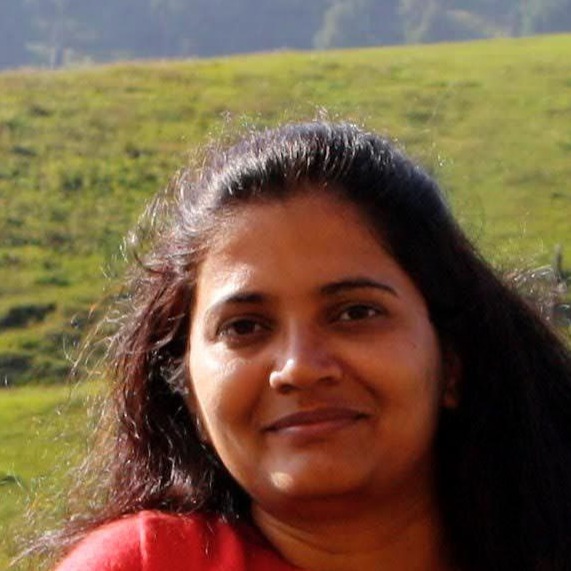
Suneeta Ojha Sharma
Suneeta is a full-time mother of two adorable troublemakers and a part-time writer chasing her undying passion for storytelling. An avid reader and chatterbox. As a storyteller and travel enthusiast, she brings people closer to themselves by inspiring their next journey - both within and beyond.
Recent news
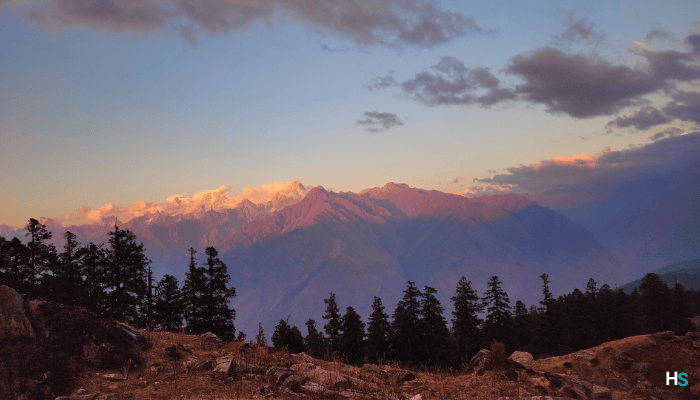
10 Dec 2025

21 Nov 2025
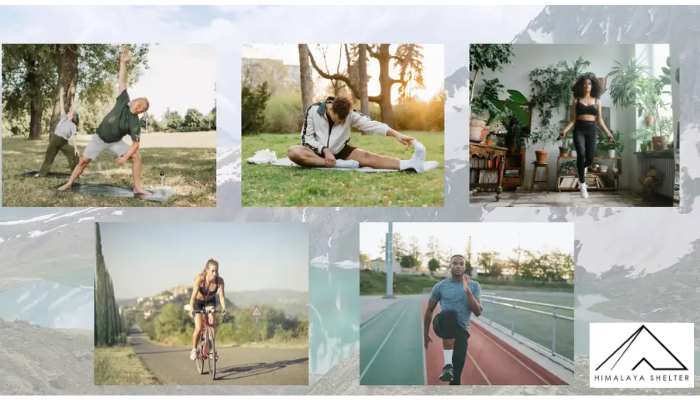
20 Nov 2025
Recommended Treks

Cost: ₹11,299 | $125.46
Type: Easy
Best Time: Jan | Feb | Mar | Aprill | May | Jun | Sep | Oct | Nov | Dec



Cost: ₹9900 | $114
Type: Easy
Best Time: April to June and September to November
